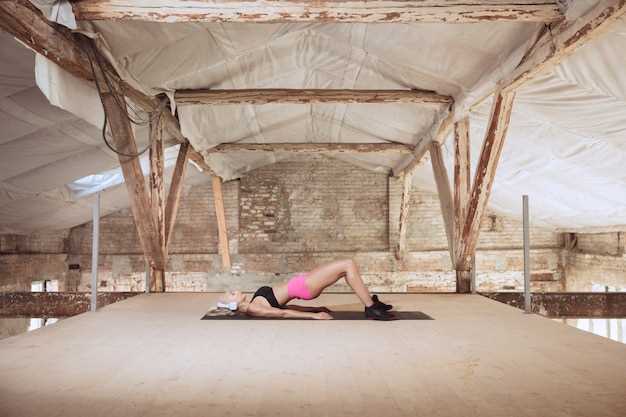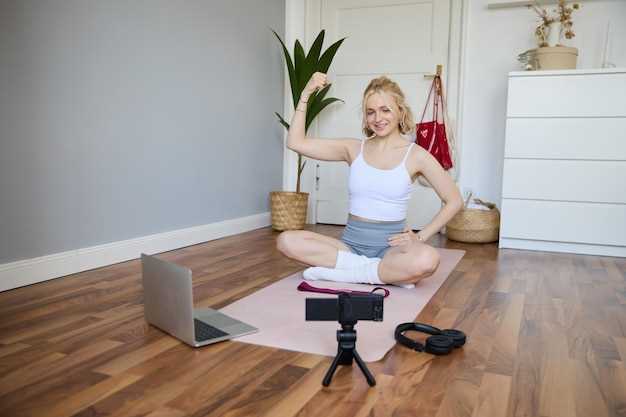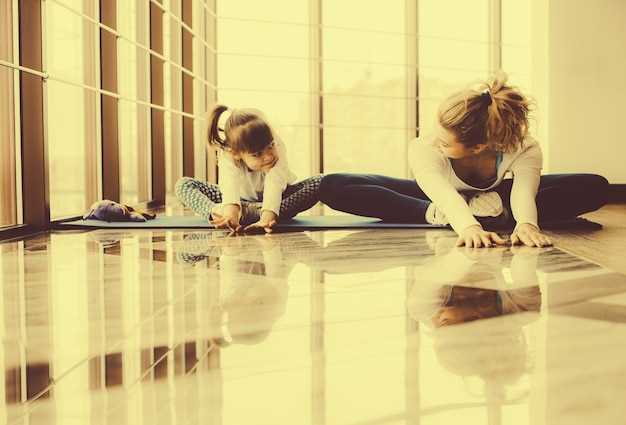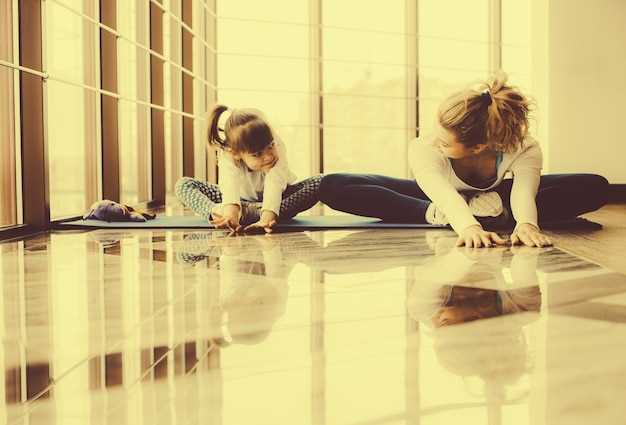Creating a personal haven for artistic expression can be a fulfilling adventure. An inviting environment can inspire creativity and drive. Think about the rhythm of your life, the blend of discipline and joy. In such a setting, every leap becomes a celebration and each turn, a moment of grace.
Envision a space where energy flows freely and the vibe resonates with your passion. It’s not just about mirrors or flooring; it’s about a connection to your craft. Enjoy the process of selecting elements that reflect your style and taste. Every choice matters, from lighting to sound.
As you delve into designing this unique enclave, consider practicality alongside aesthetics. An area dedicated to movement can also serve multiple purposes, adapting to your needs over time. Balance functionality with comfort, creating a sanctuary where you can develop and refine your skills.
Whether you prefer the invigorating beats of a dance ensemble or the soothing melodies of classical tunes, immerse yourself in a musical atmosphere that fuels your spirit. Surrounding yourself with inspiration will not only motivate your training but also enhance your overall experience.
Transform Your Space: Create a Home Dance Studio

Imagine a setting that inspires movement and creativity. A place where energy flows freely. This environment can be tailored to your personal style and needs. Whether it’s a corner of a room or an entire area, possibilities abound.
First, assess what you have. Clear clutter. Remove distractions. This step is essential to maintain focus. The room should be inviting. Natural light can play a significant role. Utilize mirrors for reflection and guidance.
Next, think about flooring. A surface that provides support is crucial. Wood or specialized dance flooring is ideal. Avoid slippery materials to reduce injury risks. Comfort matters, though aesthetic appeal shouldn’t be overlooked.
Incorporate storage for essentials. Bins for shoes, clothing, or equipment will help. Wall-mounted racks or shelves can showcase inspiration, like posters or photographs of favorite performers. The ambiance can be enriched with lighting. Soft, adjustable lighting creates a warm mood.
Sound is equally important. A good speaker system can elevate your practice sessions. Play your favorite tracks or soothing music to focus. Personalize the area with items that inspire you; plants, artwork, or even a vision board of goals can enhance your experience.
Finally, consider ventilation. Fresh air revitalizes energy. Open windows or use fans to circulate air and keep it fresh. Create a comfortable atmosphere that beckons for exploration and expression.
Essential Features for Your Dance Studio

Every dancer knows that a well-equipped environment can enhance practice quality. It’s about cultivating surroundings that inspire creativity. As you think about this space, consider what elements make it functional and inviting. The right features can motivate you to explore your passion. A dedicated area should not only serve practical needs but also spark joy and comfort.
Good flooring is crucial. You need a surface that offers support while allowing movement. Mirrors are another must-have, as they help refine technique and posture. Proper lighting sets the mood and ensures visibility. Sound equipment, like speakers, brings your favorite tunes to life. All these components combine to create an ideal environment.
Ventilation plays an important role, too. Fresh air keeps you energized during long sessions. While ample storage helps in organizing props, costumes, and accessories seamlessly. An inviting color palette establishes a warm and motivating atmosphere that encourages creativity. Furthermore, having a comfortable area for breaks contributes positively to overall productivity and well-being.
Incorporating these essentials will foster a nurturing atmosphere where you can thrive. After all, each detail matters in building a haven for exploration and expression. With the right combination of features, the practice becomes not just a routine but a joyful experience. It’s all about finding balance between functionality and inspiration while supporting growth and development.
Choosing the Right Location
Finding an ideal setting is crucial for cultivating a positive atmosphere. Location influences focus and determination. It should encourage you to engage fully in your routines. Consider the environment carefully; the right vibe makes all the difference. Natural light, proper ventilation, and adequate space come into play.
Select a quieter area to minimize interruptions and distractions. Think about accessibility too; ensure you can enter and exit effortlessly. Proximity to daily activities creates convenience. A space away from the hustle might help; however, it shouldn’t be isolated.
Remember to assess the floor surface as well. An appropriate area allows for movement without risking injury. Whether it’s hardwood, laminate, or tile, comfort is key. Rubber mats or carpets can also add cushioning. Storage for equipment can be part of the plan too; keep it organized and tidy. The chosen location can significantly affect the enjoyment of your sessions and your overall progress.
Optimal Flooring Materials
Choosing the right flooring can significantly impact performance and comfort. The choice of material not only affects movement but also safety and aesthetics. Various options are available, each with its own advantages and drawbacks. A well-considered surface can enhance practice sessions tremendously.
For those looking for flexibility, sprung floors provide excellent shock absorption. These surfaces minimize the risk of injury while allowing for dynamic movement. Vinyl flooring is another popular choice, offering durability and low maintenance. It’s also available in numerous designs to match personal taste.
Hardwood floors exude elegance but require careful consideration. They can be slippery without the right finish, yet they provide an inviting warmth. When deciding, it’s essential to balance style with functionality.
Foam tiles offer an excellent cushion feel, ideal for beginners or those practicing at home. They are soft, easy to install, and can be rearranged as needed. However, they may not withstand intense activity over time.
Ultimately, selecting flooring involves multiple factors such as budget, intensity of use, and personal preference. Each option caters to unique needs and styles. The goal is to find a solution that combines safety, comfort, and visual appeal for an inspiring environment.
Mirrors and Their Importance
In any movement-focused environment, reflections play a crucial role. They serve more than just an aesthetic purpose. Observing oneself can enrich the experience tremendously. Whether for feedback or motivation, mirrors are invaluable tools. They assist in developing one’s technique.
- Providing immediate visual feedback on body positioning.
- Helping dancers identify areas needing improvement.
- Encouraging greater body awareness and control.
- Making practices feel more engaging and dynamic.
When incorporated cleverly, mirrors can elevate the overall experience, allowing individuals to refine their movements in real-time, turning an ordinary practice into a deeply immersive exploration of art and expression.
Moreover, having a proper setup invites creativity. It’s much easier to experiment with new routines when you can see every detail of your form and style. Clarity is essential in mastering various disciplines and styles.
- Choose large, wall-mounted reflections for a panoramic view.
- Position mirrors at eye level for optimal visibility.
- Ensure lighting enhances visibility without causing glare.
- Avoid clutter near the mirrors to maintain focus.
Ultimately, whether for beginners or seasoned performers, reflections act as both a guide and inspiration. They can turn moments of self-doubt into confidence, empowering everyone to embrace their unique artistry fully.
Lighting for Ambiance and Visibility
Effective illumination influences mood and enhances performance. Good lighting emphasizes movement and creates an inviting atmosphere. It shapes the overall experience while dancing. Thoughtful choices in this area can seriously enhance one’s connection with the art.
Consider using a mix of natural and artificial sources. Natural light brings warmth and energy, while artificial options can be adjusted to suit various styles and preferences. For instance, warm-toned bulbs create a cozy environment, whereas cool tones can inspire freshness and focus. Dimmer switches offer flexibility, allowing adjustments according to the time of day or specific needs.
Task lighting is vital for visibility during intricate routines. Spotlighting areas may help increase focus on technique and form, reducing the risk of injury. Adjustable floor lamps or wall-mounted fixtures can provide directional lighting. With the right arrangement, even shadows can play a positive role, enhancing depth and movement within choreography.
Additional features like colored LED lights can shift the ambiance dramatically. These options are perfect for setting an emotional tone or energizing a space before more intense practice sessions. Just picture how a vibrant hue can invigorate your routine or, conversely, how softer shades may prompt relaxation after an intense workout.
Incorporating mirrors is another essential element to enhance both ambiance and visibility. They reflect light and allow one to observe movements closely, making practice more effective. Thoughtfully designed lighting combined with reflective surfaces creates a dynamic atmosphere where creativity can thrive.
Sound System Setup
A great audio system can elevate any practice experience. Music sets the mood and enhances performance. It’s essential to invest time in choosing the right equipment. Consider how sound travels and fills the chosen area. Quality matters, but so does personal preference.
First, think about the types of speakers you’ll need. Portable options are versatile and easy to set up. If space allows, consider a more permanent installation. Wireless systems can reduce clutter and provide flexibility. Choose a setup that accommodates your audio sources.
When arranging the system, placement is key. Ideally, speakers should be at ear level for optimal sound clarity. Also, positioning speakers away from walls helps prevent unwanted resonances. Remember to test various angles for the best experience. A careful arrangement not only looks good but also enhances performance.
Here’s a simple comparison for speaker types:
| Speaker Type | Description | Ideal Use |
|---|---|---|
| Floor-standing | Large, powerful speakers offering rich sound | Permanent setups with more space |
| Bookshelf | Compact, versatile speakers for smaller areas | Temporary or flexible settings |
| Bluetooth | Wireless, convenient options for easy setup | On-the-go or casual use |
Don’t forget about acoustic treatment to improve sound quality. Soft materials can absorb echoes, while reflective surfaces can enhance clarity. Adding rugs or curtains can significantly change acoustics. Investing in these features allows for an improved auditory backdrop.
Ultimately, your sound system should inspire creativity and motivate continuous improvement. Ensure that it aligns with your vision and needs. Testing various configurations may yield surprising results, so keep adjusting until it feels just right.
Tips for Maximizing Your Dance Area

Optimizing an area for movement can significantly enhance practice sessions. It’s all about the right adjustments and clever organization. A few thoughtful choices make a world of difference. Small changes can lead to big improvements.
- Clear unnecessary items.
- Utilize mirrors for self-assessment.
- Invest in suitable flooring.
- Ensure good lighting.
- Maintain a consistent temperature.
By making sure that the area is free from clutter and distractions, not only can one improve focus on the movements, but also create a more inviting and functional environment that encourages creativity and growth in techniques.
- Use storage solutions for equipment.
- Incorporate a sound system for music.
- Display motivational artwork for inspiration.
- Consider wall-mounted bars for support in various practices.
A well-organized and aesthetically pleasing environment does wonders for motivation, allowing one to fully immerse in the experience, embrace the rhythm, and enjoy every moment spent honing techniques.
Decluttering and Organizing Space
Clearing and arranging a surrounding can significantly boost focus and creativity. It’s essential to foster an environment that inspires movement and expression. When distractions are minimized, artists can immerse themselves fully in their craft. A well-structured area allows for better flow and enhances motivation. Sudden bursts of energy may arise, especially in a well-organized setting.
Every item should have its designated place. It’s not just about tidiness; it’s about functionality. Consider what you truly need for each session. Discarding unnecessary items creates room for inspiration. Think of it as a refreshing cleanse.
Begin by evaluating the contents of your area. Start with a thorough examination of all objects, equipment, and materials. Assess which belongings serve a purpose, which bring joy, and which have become mere clutter. This mindful approach will help in establishing a balance. The less visual noise there is, the more clarity you’ll gain.
Organize by categories. Group similar items together for easy access. Perhaps store accessories, attire, and equipment in separate containers. Labels can assist in maintaining order, ensuring everything retains its designated location. A bit of strategic planning goes a long way.
Lastly, maintain this newfound order with routine checks. Aim to assess your setup regularly, as habits can easily lead to disarray. Keeping a clean and organized area not only encourages productivity but also fosters a sense of peace and stability in your artistic journey.
Incorporating Versatile Furniture
Adopting multifunctional furnishings can elevate any practice area. Pieces that serve multiple purposes maximize efficiency and comfort. It’s essential to choose items that enhance functionality while keeping the environment inviting. Consider how certain elements can adapt to various activities.
For instance, a foldable table can be used for resting or setting up equipment and can easily be tucked away when not needed. Likewise, portable storage solutions allow for easy access to essentials and can be neatly hidden after use.
By selecting ergonomic chairs, one can create a cozy corner for relaxation, inviting creativity during breaks or transitions between activities.
Simple yet elegant ottomans can provide extra seating for friends or family while also acting as a storage option for essentials like shoes and accessories. When every piece serves distinct purposes, it contributes to a functional layout.
This thoughtful approach to furniture helps maintain an organized and welcoming atmosphere, encouraging regular engagement and enjoyment, making the space not just a practice area but also a hub of creativity and expression.
Video:
How To Build An In-Home Dance Studio 2020 – Less than $60
How To Build An In-Home Dance Studio 2020 – Less than $60 by Cameron Cole 83 views 4 years ago 3 minutes, 45 seconds
Q&A:
What are the essential items I need to create a home dance studio?
To create the perfect home dance studio, you’ll need a few essential items: a sturdy dance floor or mats to protect your joints, mirrors to check your form, and a sound system for music. Depending on your preference, you might also want to invest in lighting that can be adjusted for mood, barre rails for ballet practices, and storage solutions for your dance gear. Ensuring you have enough open space to move around is crucial, so measure your area beforehand to avoid limitations during your practice.
How can I choose the right location in my home for a dance studio?
Choosing the right location for your home dance studio is key to creating a comfortable and inspiring practice space. Aim for a room with ample natural light, as this can enhance your mood and energy levels. The space should also have enough ceiling height to accommodate jumps and extensions. Consider using a room with hardwood or laminate flooring, which offers better support than carpet. Make sure to avoid basements or areas prone to dampness, as these can affect both your equipment and your health. If possible, a spare room, garage, or even a sunroom can serve as an ideal spot.
What type of flooring is best for a home dance studio?
For a home dance studio, the best flooring options include sprung floors, vinyl, or hardwood. Sprung floors are ideal as they provide cushioning, reducing the risk of injury during high-impact movements. Vinyl flooring is also popular due to its durability and ease of cleaning, while hardwood offers a classic feel and great aesthetics. Avoid carpet as it can inhibit movement and increase the risk of slipping. Additionally, consider using dance mats for added protection and comfort, especially for genres like ballet or contemporary dance.
How can I make my home dance studio more inspiring and motivational?
To make your home dance studio more inspiring, consider incorporating elements that resonate with your personal style and dance goals. You can hang inspirational quotes or photographs of dancers and performances around the room. Adding plants or artwork can also enhance the ambiance. Personalize your space with colored lighting or decorative accents that reflect your energy. Creating a dedicated corner for relaxation, such as a cozy chair with a soft blanket, can also provide a space to unwind and recharge between practices. Finally, regularly update your playlist with new songs to keep your practice sessions exciting.
How can I ensure my home dance studio is safe for practice?
Safety is crucial when setting up your home dance studio. Start by ensuring that the flooring is even and free from any hazards, such as loose cables or furniture that could pose a risk while moving. Make sure the space is well-lit to avoid any potential accidents. Having mirrors can help you monitor your form, but ensure they are securely mounted to prevent any breakage or injury. Additionally, keep a first-aid kit accessible in case of minor injuries. Lastly, remember to warm up properly before dancing to help prevent strains or injuries while practicing.
